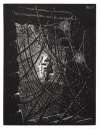Franz
Marc
Marc's innovative use of colour and form in animal paintings made him a leading figure in German Expressionism and a co-founder of Der Blaue Reiter. If you're looking for Franz Marc original prints and editions for sale or would like to sell, request a complimentary valuation and browse our network's most in-demand works.
Franz Marc art for sale
Discover Franz Marc prints for sale, exclusively available through our private network of collectors. Explore signed and unsigned screenprints, lithographs, digital prints, and rare editioned proof prints by era-defining blue chip artists.
Sell Your Art
with Us
with Us
Join Our Network of Collectors. Buy, Sell and Track Demand
Biography
Franz Marc emerged as a pivotal figure in the German Expressionist movement during the early 20th century. Born into an artistic family in Munich, Marc initially pursued theological studies before dedicating himself to art. His artistic practice combined a spiritual connection to nature with a modernist approach to colour and form, setting him apart from his contemporaries.
Marc's artistic journey was influenced by his travels to Paris, where he encountered the works of Post-Impressionist masters such as Vincent van Gogh and Paul Gauguin. These experiences, coupled with his own spirituality, led Marc to develop a distinctive style that sought to capture the allure of nature, particularly through his iconic depictions of animals.
In 1911, Marc co-founded Der Blaue Reiter (The Blue Rider) group with Wassily Kandinsky, marking a significant moment in the development of Modern Art. This collaboration would prove instrumental in shaping the direction of Expressionism across Europe.
Marc's artistic career flourished rapidly in the years following the formation of Der Blaue Reiter. His work during this period, characterised by increasingly abstract representations of nature, demonstrated a sophisticated use of colour symbolism. Marc assigned specific emotional and spiritual qualities to different hues, with blue often representing masculinity, yellow femininity and joy, and red the material world.
One of Marc's most famous works, The Fate Of The Animals (1913), exemplifies his mature style. This large-scale painting, composed of fragmented forms and intense colours, showcases Marc's ability to visually convey weighty emotional states. The work is often interpreted as a premonition of the impending devastation of World War I.
Tragically, Marc's career was cut short by the outbreak of the war. He enlisted in the German army in 1914 and was killed in action at Verdun in 1916, at the age of 36. Despite his untimely death, Marc's influence on Modern Art was profound and enduring.






















